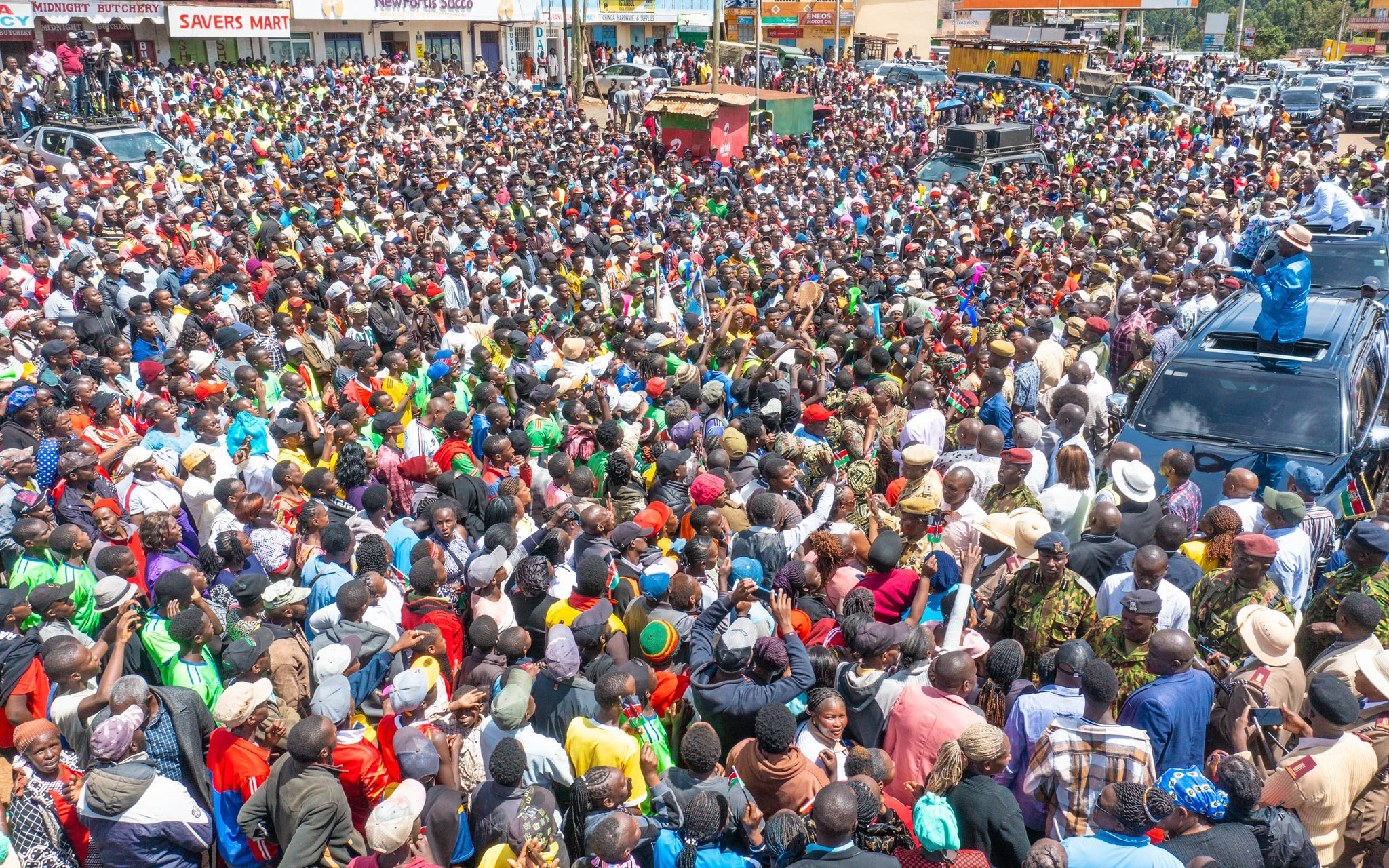
President William Ruto’s six-day sweep through the Mt Kenya region was as much about salvaging political capital as it was about unveiling development projects. His tour – between April 1 and 6 – cut across nine counties: Laikipia, Nyeri, Kirinyaga, Murang’a, Meru, Tharaka-Nithi, Embu, Nyandarua and Kiambu.
These counties are not just economic anchors—they are critical electoral zones.
For the President, the visit was a high-stakes mission to reassure a restless constituency while reasserting his political presence amid growing dissent.
At face value, the tour projected a government keen on delivering the Bottom-Up Economic Transformation Agenda.
Ruto launched road and market projects, engaged with farmers and traders, and spoke boldly about economic dignity and national unity.
The optics were powerful— and so was the media attention. But beneath the surface, a more complex narrative was at play: the widening rift in Mt Kenya politics following the ouster of former Deputy President Rigathi Gachagua.
Gachagua’s impeachment in 2024 and subsequent defection to the opposition fractured Kenya Kwanza’s unity.
His claims of regional betrayal have struck a chord with a significant section of Mt Kenya voters who feel economically sidelined and politically underrepresented. His message is gaining traction—and that, more than his defiance, poses a real challenge to Ruto’s grip on the region.
This tour, then, was not just about development; it was political damage control. That was evident in the raw public feedback along the way: some leaders who accompanied the President were loudly booed, while others received cheers or even jeers depending on their perceived loyalty or delivery record.
These reactions, far from being minor outbursts, offered a window into the region’s political temperature. They revealed an electorate that is not just observant, but increasingly vocal and unafraid to express disapproval—even in the President’s presence.
These moments of public judgment highlighted the widening gap between grassroots sentiment and elite political manoeuvring.
They also pointed to a shift in how the region is engaging with leadership—performance, not proximity to power, is what seems to matter most now.
Even more concerning was the exclusionary tone of the tour. While the President called for unity, he surrounded himself with loyalists. Leaders perceived as dissenters, especially those allied to Gachagua, were noticeably absent. That sends a message, and not a good one.
In a politically diverse region, unity cannot be decreed from a podium. It must be built through open, inclusive dialogue.
The region’s challenges are real and long-standing: poor farmgate prices for coffee, tea and macadamia; delayed payments to farmers; a ballooning youth unemployment crisis; and overstretched health services.
These issues will not be solved by cutting ribbons or issuing soundbites.
They demand real reforms, budget discipline and direct engagement with local realities.
To his credit, President Ruto’s visibility and willingness to speak directly to communities is a step forward. His development agenda, if implemented with urgency and accountability, has the potential to bring change.
But the time for talk is over. Without concrete action, this tour – however well-scripted – risks becoming another act in Kenya’s long-running political theatre.
Political strategist and expert in leadership and governance



![[PHOTOS] How Nairobians marked Palm Sunday](/_next/image?url=https%3A%2F%2Fcdn.radioafrica.digital%2Fimage%2F2025%2F04%2Fda5448ea-e6d2-42f6-8ea8-792635ed8ad8.jpeg&w=3840&q=100)




